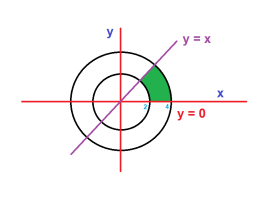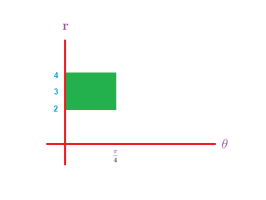I've been trying to solve these types of problems for a while now and still can't figure out how to set boundaries for each integral in a multiple integral equation. One of the questions is as follows:
Compute the integral
∬Ω(−2x+4y−2) dΩon the region Ω={(x,y)∈R2;4≤x2+y2≤16 and y≥0 and y≤x}
And somehow, the boundaries of each integral to solve this equation are as follows :
∫04π∫24(−2(r⋅cosα)+4(r⋅sinα−2))⋅r dr dα
I get everything except the part on defining the regions of each integral. Any explanation would be really helpful for me. Thanks.
Compute the integral
∬Ω(−2x+4y−2) dΩon the region Ω={(x,y)∈R2;4≤x2+y2≤16 and y≥0 and y≤x}
And somehow, the boundaries of each integral to solve this equation are as follows :
∫04π∫24(−2(r⋅cosα)+4(r⋅sinα−2))⋅r dr dα
I get everything except the part on defining the regions of each integral. Any explanation would be really helpful for me. Thanks.


